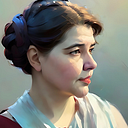Member-only story
Creepy Cosmic Hand Touches Stellar Blast
Most of the time, the images we get back from spacecraft and telescopes are beautiful. Sometimes they’re meh or boring. Occasionally, they are downright creepy. Early in this century, astronomers using the Chandra X-Ray observatory spotted a structure made of hot gas that looks like a creepy hand generated by your favorite special effects company.
In 2009, the ghost hand was described as a 150 lightyear spanning cloud of gas illuminated by a rapidly spinning neutron star that could briefly fit on Manhattan Island… before its gravity destroyed the planet. Named PSR B1509–58, this pulsar is only 1700 years old and would have formed in a SN explosion while the Mayan Civilization on Earth was at its peak and the Jin Dynasty ruled China.
In addition to lighting a hand-shaped structure, the SN that formed that pulsar also generated a shockwave that is expanding through space fast enough that we can see it changing from year to year. In comparing images from 2004 & 2008 with data from 2017 and 2018, it became possible to see a ring of light — that ring the hand appears to be touching — ever so slowly changing. That glowing ring is where the supernova’s shockwave is hitting a wall of otherwise invisible material and heating it up to be visible in X-rays.
As the shock expands and moves through the wall, we see the ring get larger. This is comparable to how a flashlight beam or headlights appear to get larger with distance as it shines through fog or dust.
The science is super cool… or super hot if you want to be literal. The image… this is one that won’t be going on my wall.
